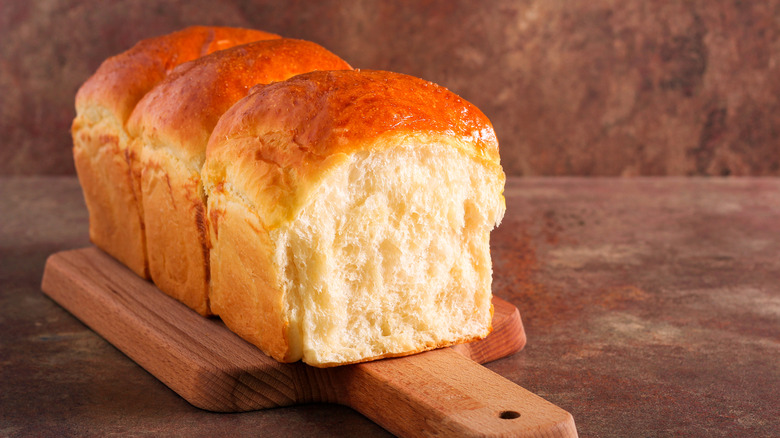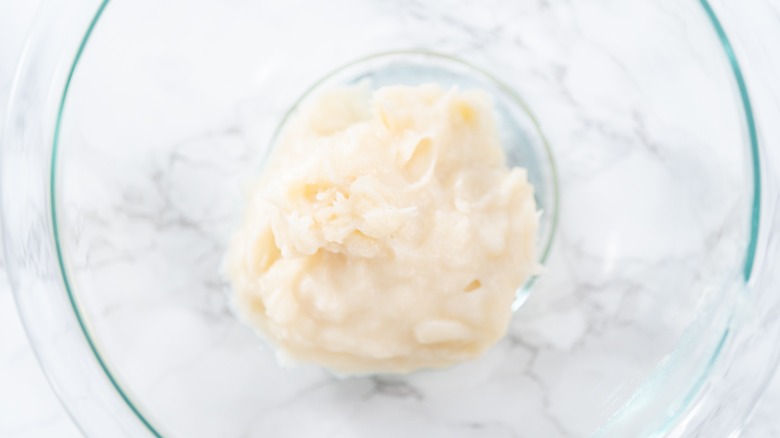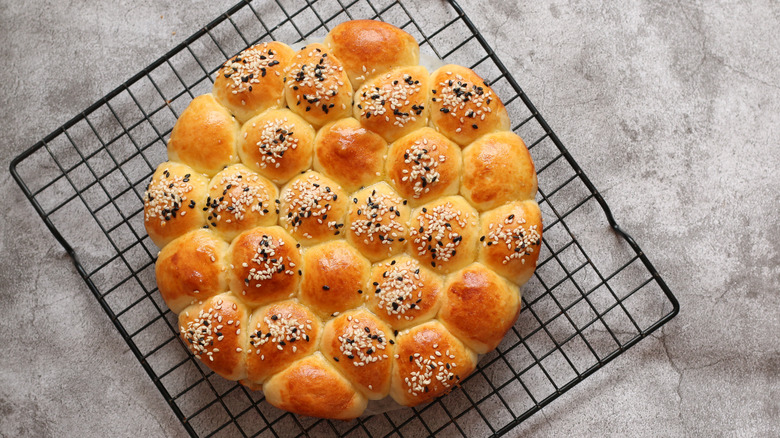What Exactly Are Milk Buns?
There's a reason Japanese cuisine is so highly regarded around the globe. In addition to the light, pleasant mix of flavors and gorgeous presentation (there may not be a more fun cuisine to look at), the cooking techniques involved in Japanese food are often quite unlike anything else in other cuisines. But Japanese food isn't all about fish and soy sauce; there are plenty of incredible baked confections as well, and one of them is Japanese milk bread, aka Hokkaido milk bread (named after the northernmost island in Japan's archipelago), aka milk buns.
But what makes milk bread so unique? Unlike most other breads, the answer starts with how it's made, with a tangzhong starter designed to ensure a light, fluffy texture. The combination of how it's prepared and what goes into it creates a light snacking bread that requires no accompaniment to be delicious (though it can certainly handle add-ons) and is a perfect afternoon treat.
What is a tanzhong starter and how does it make milk bread possible?
The tangzhong starter is the first part of what makes this possible. Most bread-making is relatively simple: You take the ingredients and mix them into a dough. Tangzhong, however, adds an extra step to the process, first creating what is essentially a roux with milk and preparing it into a thick paste, then adding that paste to the remaining dough ingredients. The result creates a light, airy texture in the bread as the dough is able to retain more moisture. In addition to the texture, the milk, as part of the starter, lends a significant sweetness to milk buns.
If all of this sounds familiar, it might be because there's another type of bread rolls you might be aware of that shares many of the principles of milk bread: Hawaiian rolls. Typically, Hawaiian rolls also make use of a tangzhong starter, although they're often sweetened with different components from milk bread (pineapple is a common one, which makes sense given their origins). This means that though they're similar, the result involves a different flavor profile.
Milk buns are eaten in a variety of ways
The colloquial Japanese name for milk bread is "shokupan," which translates to "eating bread," which makes sense — this is a bread product you can snack on without anything else to accompany it, which is probably the most common way it's eaten. When did you last do that with untoasted, unadorned wheat toast?
But milk bread's uses go beyond just snacking rolls. It's commonly used as the component in fruit sandwiches (also known as "fruit sando"), as its sweet flavors play off the similar ones present in fruit. For the same reason, it's excellent as a base for avocado toast, as it is for bread pudding, as it's already essentially halfway to a dessert food. Like any other type of bread, you can also just toast it and eat it with butter.
If you have a chance to try Japanese milk buns, you shouldn't let it pass you by. You'll be hooked once you get used to its light, airy deliciousness.


